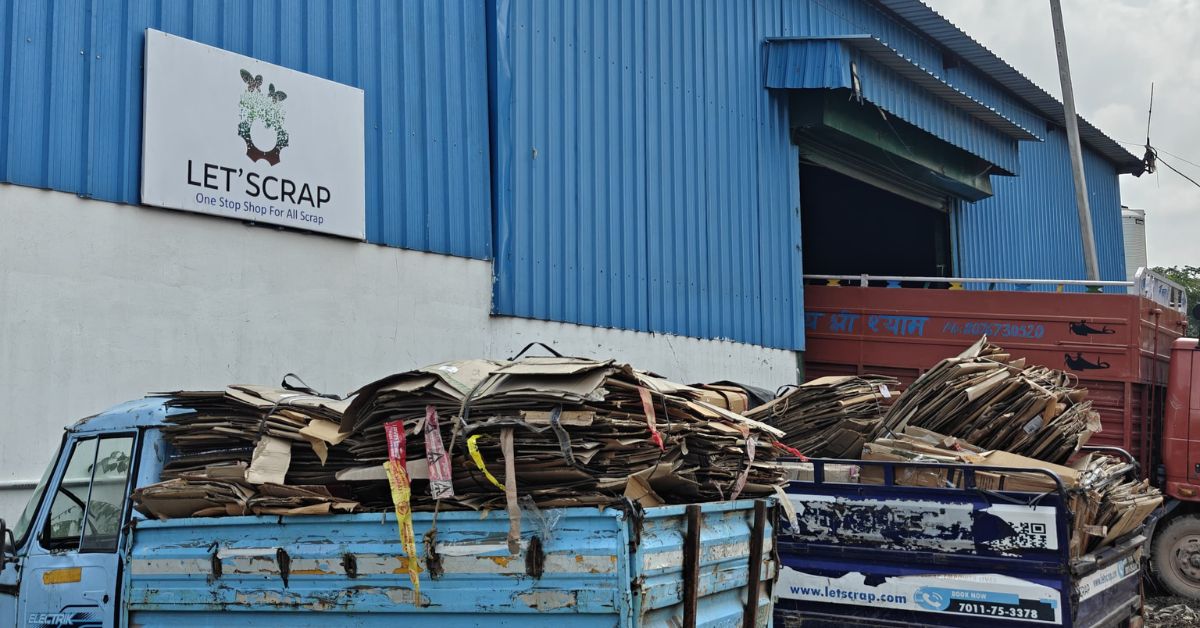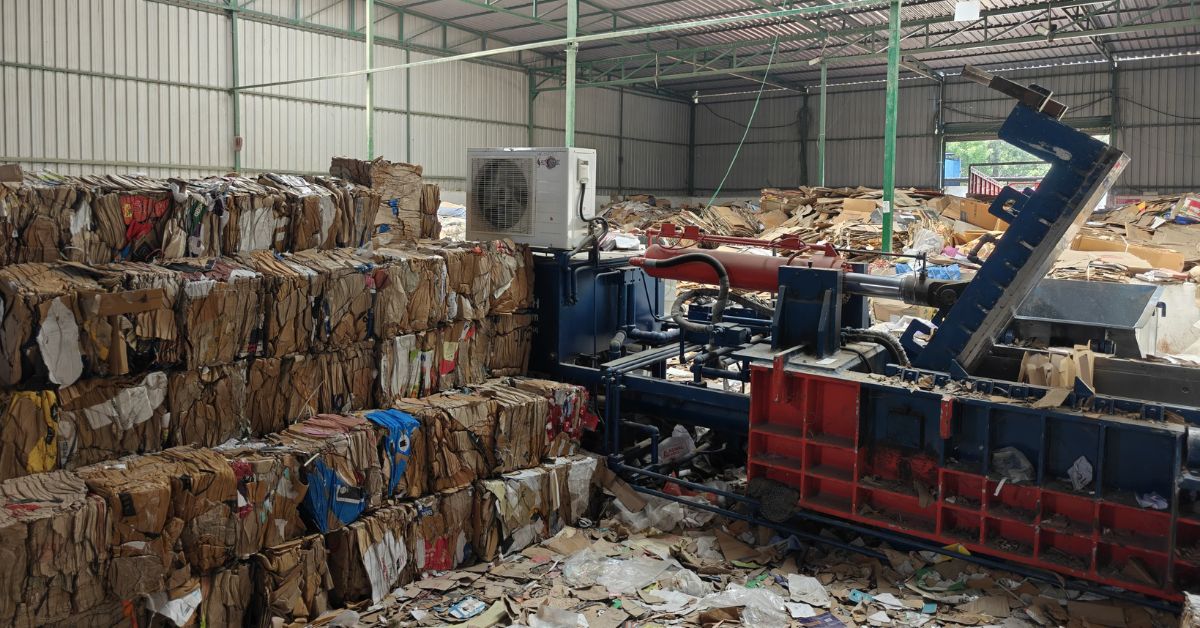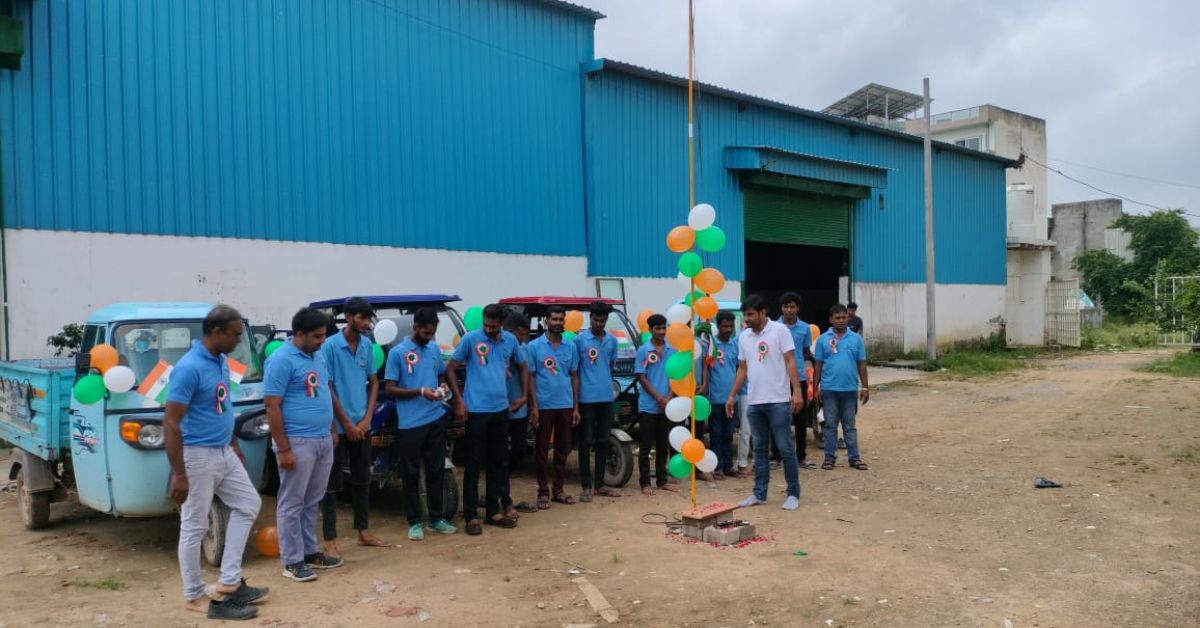It was just another day at work for Anuj Bhatnagar. He was called for a meeting that would reshape his understanding of waste management.
The topic on the table was simple: DTH boxes and Wi-Fi routers, ubiquitous in households, were reaching their end of life.
The task seemed straightforward — dispose of them responsibly. But as he would soon discover, this task was layered with complexities.
Anuj had expected a legion of service providers ready to handle his company’s scrap disposal needs. Instead, there were merely a handful of vendors, each less reliable than the last.
“Prices were unpredictable and depended not on how good the service was, but on the unpredictable decisions of a few people who controlled the market. The processes involved were unclear and filled with inefficiencies that frustrated me,” he says.
The crux of the problem lay not just in the scarcity of vendors but in the disorderly nature of the industry itself. Talks with vendors left Anuj with more questions than answers.

“The way things were done wasn’t clear – it was hard to see what happened between when something was handed over and when it was finally recycled. There was no organised system, just a mix of random decisions and hurried last-minute actions,” he adds.
“I would spend my weekends interviewing shopkeepers and recyclers, dissecting the role of local kabadiwallas, and extracting insights from market dynamics,” he says.
Anuj noticed overwhelming issues: limited vendor competition, archaic processes, and a lack of transparency in operations. The problem was evident — a scrap disposal system needed reform.
Often, Anuj would discuss the issue with his colleagues and friends, Udaibhan Singh and Amit Gautam. Once, over dinner at a cosy restaurant, Amit proposed that they should seize this opportunity and start a business together, incorporating technology to bring meaningful change.
In that moment, ‘Let’s Scrap’ was born — with a bold vision to create a roadmap for responsible waste disposal.
Turning trash to treasure in corporates
As a part of his solution, Anuj worked on a systematic plan to dispose of scrap that bridged the gap between corporate structure and environmental requirements.

He envisioned a streamlined, digitally backed system for corporates to manage waste — from capturing photographic evidence of scraps to ensuring every transaction was traceable and compliant with regulatory standards.
Unlike others who focused solely on household waste, their platform was tailored to the stringent needs of corporates, tackling not just waste but the associated compliance and audit complexities.
Their innovation lay in ensuring each scrap’s journey was documented, from pick-up to recycling, thus enabling transparency and trust.
One pivotal client success story was with Aditya Birla Fashion. Before partnering with Let’s Scrap, their scrap handling was plagued by pilferage and inefficiencies.
Anuj’s platform swiftly turned their yearly scrap collection into a bi-monthly exercise, unearthing previously unseen profits and reducing losses. This transformation of a cumbersome, opaque process into a well-oiled, profitable one exemplified the core mission of Let’s Scrap.
Let’s Scrap serves three main types of customers: corporate clients, small retail shops, and households. It provides a digital platform for clients, which can be accessed via their website or mobile application.
Corporate clients, such as e-commerce and FMCG companies with multiple store locations, use this platform to schedule scrap collection. Each store is onboarded onto the platform as a collection point, allowing them to schedule pick-ups based on their scrap generation frequency.
Collection agents from Let’s Scrap use their app to take photos and record material details digitally during pick-up. A digital invoice is generated, and the collected scrap is transported to a Material Recovery Facility (MRF), where the scrap is sorted into categories like paper, plastic, metal, e-waste, and more.

The segregated scrap is then sold to authorised recyclers, ensuring compliance with government regulations. The company provides Extended Producer Responsibility (EPR) certificates to corporate clients, helping with regulatory compliance.
The startup, Anuj says, does not charge companies for scrap collection. Instead, they pay corporates for the scrap collected, generating income through selling to recyclers.
This business model also provides significant financial benefits to clients, sometimes offsetting a noticeable portion of operational costs such as store rentals. “For some clients, scrap revenue constitutes about 20-25 percent of their rental costs,” says Anuj.
Joining forces for a better planet
Let’s Scrap is working with more than 200 companies, including both large conglomerates and small, localised businesses across more than 12 cities, including Delhi, Gurugram, Jaipur, Chennai, Panipat, and Chandigarh.
It also extends its services to 11 residential societies in Gurugram, covering around 4,000 households.
One of his clients, Aditya Birla Fashion Retail, operates a vast warehouse in Rajasthan. Before partnering with Let’s Scrap, Anuj mentions it provided them with data showing that they typically sold about 24 tons of scrap annually to a local vendor.
“After joining forces with Let’s Scrap and experiencing our streamlined, transparent digital collection system, they were amazed by the results. In just two months, we managed to collect 33 tons of scrap, almost matching their previous yearly total. This wasn’t due to increased scrap generation, but rather because our efficient processes uncovered significant pilferage that the company hadn’t realised was happening,” says Anuj.
“That company saw a fivefold increase in the income it generated from scrap. So, we not only ensure an easy collection process and secure disposal, but also deliver substantial economic benefits,” he adds.

Gajendra Singh, a senior executive at Aditya Birla Fashion Retail’s TCS Division in Pataudi, Haryana, explained their journey towards sustainable waste management.
Initially unaware of environmentally safe disposal methods, Gajendra conducted thorough research and reached out to Let’s Scrap on LinkedIn to find a suitable partner that could meet their compliance requirements for waste and sustainability.
“Previously, we gave away our company’s waste to local vendors, without much oversight or assurance of responsible disposal. But we were concerned about potential environmental liabilities, so we switched to partnering with Let’s Scrap. Through its app, we effortlessly schedule waste pick-ups, ensuring that all waste is collected directly from our warehouse and delivered to authorised recyclers. We have so far given 33 tons of waste, including polybags, expired cosmetic products, and packaging cartons to them,” Gajendra says.
The transition has brought about significant benefits. “Not only do we receive certification detailing the disposal process and outcomes, but we also resolve issues of pilferage that often occur with local vendors. The introduction of standard operating procedures has eliminated discrepancies,” he adds.
Gajendra notes that beyond the economic advantages, the most compelling aspect is the environmental compliance and impact achieved.
“Through this streamlined process, we have contributed significantly to sustainability, with reports highlighting the saving of eight million litres of water and other environmental benefits on the carbon footprint. I am glad we are now more conscious and proactive in addressing environmental concerns,” he says.
Over the past two years since its formal launch in 2023, the startup has disposed of about 20,000 metric tons of scrap.

What an expert has to say about Let’s Scrap
“Cities like Gurugram, Bengaluru, and Chennai house major corporations that struggle with waste management due to strict regulations,” says Noida-based environmentalist Vikrant Tongad.
“Proper segregation is critical — many burn waste just to get rid of it. Even a simple pen has plastic, metal, and ink — how do you separate that without scientific disposal? Startups like Let’s Scrap can bridge this gap by offering authorised, sustainable solutions.”
Economics behind the start-up
Bootstrapped with an investment of Rs 1.2 crore from the co-founders’ collective savings, the startup is now approaching nearly Rs 1 crore in monthly revenue, generating about 20-25 percent gross profit margins.
Reflecting on his journey, Anuj articulates how client feedback serves as his greatest motivation.
“Positive responses — whether in the form of reduced bills or praise for our efficiency and transparency — validate the risk we took. Despite the inherent challenges of team building and manoeuvring through an unorganised landscape, our goal remains to ensure Let’s Scrap not only succeeds as a business but also leaves a lasting impact on the environment around us,” says Anuj.
All images courtesy: Anuj Bhatnagar.
No comments:
Post a Comment